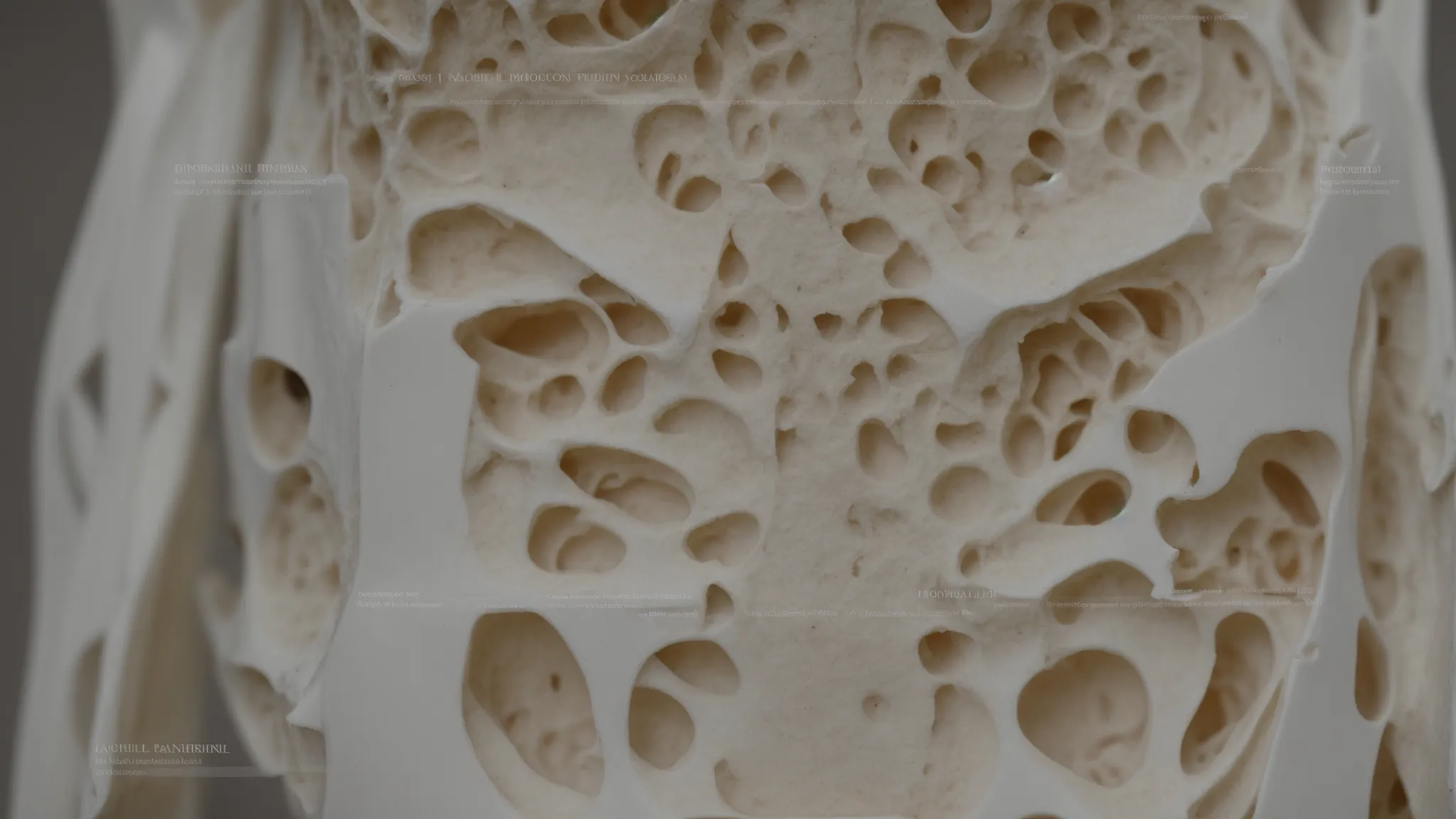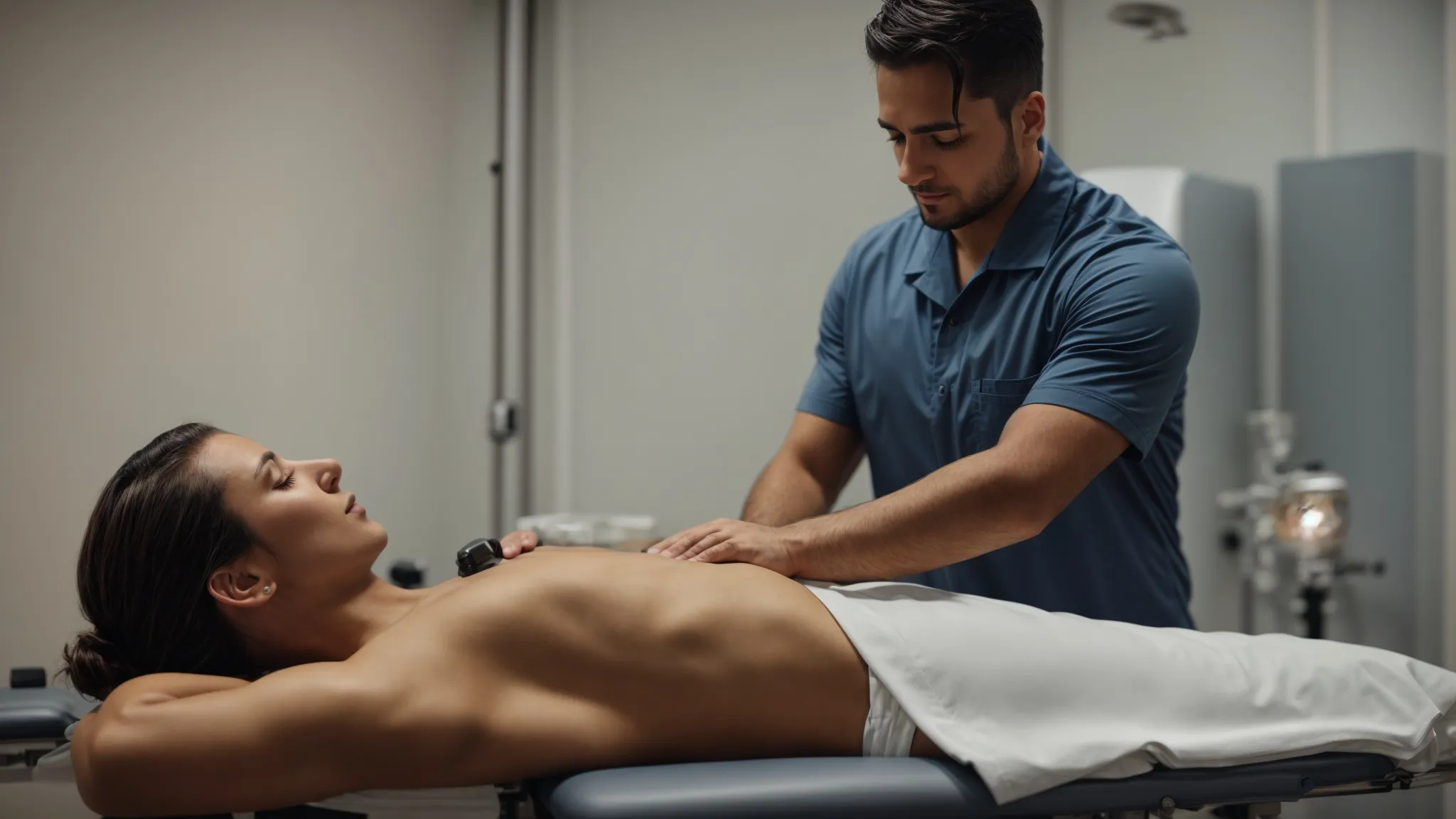Effective Chiropractic Techniques for Alleviating Sacroiliac Pain
Sacroiliac joint dysfunction, a source of agony that often lurks unacknowledged in routines, strikes the region where the spine and pelvis unite, manifesting as discomfort in the buttock or lower back.
As an experienced chiropractor, I’ve honed techniques that effectively address the perplexing maze of sacroiliac pain, offering patients not just relief but a pathway to long-term well-being.
We see an array of real individuals, not just case studies, grappling with this pain which can be as sharp as a stab or as persistent as the nagging worries of the day.
Through gentle yet firm spinal manipulations, targeted mobilization, and a suite of soft tissue therapies, we dive deep into the heart of sacroiliac.
Keep reading to explore how chiropractic adjustments can unlock a smoother gait and lasting pain management without the need for medication or surgery. What are the best treatments for Lower Back Pain?
Key Takeaways
- Sacroiliac Joint Dysfunction Causes a Range of Symptoms That Can Significantly Impact Mobility and Quality of Life
- Chiropractic Care for Sacroiliac Pain Includes a Holistic Approach Involving Manual Therapy and Education for Long-Term Wellness
- Techniques Such as Spinal Manipulation, Mobilization, and Soft Tissue Therapy Are Central to Treating Sacroiliac Dysfunction Effectively
- Exercises and Lifestyle Changes Are Integral to Managing and Preventing Sacroiliac Joint Pain, Enhancing the Effectiveness of Chiropractic Treatment
- The Activator Method and Thompson Drop-Table Technique Are Specialized Chiropractic Adjustments That Provide Targeted SI Joint Pain Relief
Understanding Sacroiliac Joint Dysfunction

Embarking on a journey to demystify the complexities around sacroiliac dysfunction, I find it imperative to start by laying a solid foundation of understanding.
Sacroiliac pain, often simply abbreviated to SI pain, presents a perplexing challenge that affects my patients in varying degrees, leaving some with a minor inconvenience while for others, it becomes a substantial hinderance in their daily lives.
In my clinical observations, the anatomy of the sacroiliac joint is a marvel of biomechanical engineering, designed to be both sturdy and flexible, acting as a shock absorber between the sacrum and the ilium bones.
However, when this joint is afflicted by dysfunction, a spectrum of symptoms can manifest, ranging from a dull ache to acute, stabbing sensations in the lower back and buttocks.
It’s crucial to recognize these symptoms as they are often the body’s distress signals, alerting us to SI joint problems that can significantly impact one’s gait and overall quality of life.
Anatomy of the Sacroiliac Joint
The sacroiliac joint is a fascinating study in human anatomy, tethering the pelvis to the spine’s base. This joint serves as a pivotal bridge, connecting the tailbone—or sacrum—to the pelvis’s large, blade-shaped bones known as the ilium. Within its role, the sacroiliac joint supports the upper body’s weight, distributing it across the pelvis and into the lower limbs.
Within my practice, I often elucidate to my patients that despite its limited motion, the sacroiliac joint is crucial for effective energy transfer, especially during locomotion. This unique joint allows for a slight, but essential, degree of flexibility while maintaining the pelvis’s stability, enabling activities from walking to maintaining an upright stance.
Common Symptoms Associated With SI Dysfunction
When SI joint dysfunction enters the conversation in my office, patients often describe a constellation of symptoms that Chiropractic can help The most common red flag is a persistent pain localized to the lower back or buttocks area, occasionally radiating into the lower extremities.
During the examination, I might note additional indicators highly suggestive of sacroiliac joint issues, including discomfort that intensifies when standing up from a seated position or sustained pressure on the joint, like during long car rides. Let’s outline these telling signals:
- Persistent localized pain in lower back or buttocks
- Radiating pain into the lower limbs
- Increased discomfort upon transitioning from sitting to standing
- Heightened pain following prolonged pressure on the sacroiliac joint
Such symptoms, I explain, can be exacerbated by certain activities and may present with associated numbness or a tingling sensation, signaling potential nerve involvement. Thus, paying close attention to these symptoms grants us the opportunity to intervene effectively with appropriate chiropractic care.
Now that you’re better acquainted with the nuances of sacroiliac joint dysfunction, let’s pivot to an invigorating discussion about the chiropractic profession’s approach to alleviating this common source of discomfort. Fasten your seatbelt as we explore how Expert Spinal Care can turn the tide on sacroiliac pain.
The Role of Chiropractic in Sacroiliac Pain Relief

In delving into the chiropractic approach to easing sacroiliac pain, I often emphasize the core philosophy underlying our practice: the body’s profound capacity for self-healing, given the right alignment and conditions.
As a chiropractor, I dedicate myself to not just alleviating the pain my patients endure from sacroiliac joint dysfunction but also to restoring their functional harmony.
This begins with a comprehensive examination, a thoughtful analysis of their symptoms, and the deployment of tailored, hands-on techniques designed to relieve stress from the affected areas and promote optimal movement. When should you see a Chiropractor?
How Chiropractors Approach Sacroiliac Dysfunction
Addressing sacroiliac dysfunction, as a chiropractor, begins with an accurate discernment of the condition’s presence, often a complex task due to potential symptom overlap with other forms of lumbar and pelvic pain. I employ a variety of diagnostic techniques, including static and motion palpation, to pinpoint the sacroiliac joint as the pain generator.
Once confirmed, my chiropractic treatment plan is developed to specifically target the area of concern, employing methods such as spinal manipulation or mobilization to reinstate joint mobility and alleviate discomfort:
- Diagnosing SI joint dysfunction through palpation and symptom assessment
- Creating a targeted treatment plan with spinal manipulation or mobilization techniques
Exploring the connection between chiropractic techniques and sacroiliac pain has revealed the profound impact of targeted therapies. Let’s shift our focus to the dynamic world of spinal manipulation and uncover how it specifically addresses SI pain.
Spinal Manipulation Techniques for SI Pain
Transitioning into the heart of chiropractic efficacy for SI joint pain, effective spinal manipulation techniques stand at the forefront of my therapeutic arsenal.
Through years of expertise honed in the chiropractic profession, I have mastered specific adjustments that are meticulously designed to address the unique challenges posed by sacroiliac dysfunction.
These procedures, rooted in precise application and keen anatomical insight, offer more than transient relief, steering patients toward a path of sustainable recovery.
As I prepare to delve deeper into the nuances of these adjustments and the process of spinal manipulation, it becomes clear that these methods encapsulate the essence of chiropractic’s holistic approach to patient wellness.
Specific Adjustments Used for Sacroiliac Relief
Among the numerous techniques at my disposal, the specific adjustments for sacroiliac relief are a blend of finesse and structured force, aimed at realigning the sacroiliac joint, reducing inflammation, and easing muscle tension. My focus is often on the Drop Technique—a highly effective adjustment where controlled pressure is applied, resulting in realignment without discomfort for the patient.
Another critical adjustment in my practice involves the use of the Chiropractic adjustments, where a hand-held instrument delivers precise, low-force impulses to the sacroiliac joint, offering a gentler alternative for pain relief. This technique is particularly beneficial for patients who may be apprehensive about manual adjustments or are dealing with acute si joint pain.
The Process of Spinal Manipulation
The process of spinal manipulation is delicate, requiring a substantial depth of knowledge and precision. As I approach a patient dealing with SI joint pain, my hands become instruments of healing, guided by years of training and clinical sensitivity to the nuances of the joint’s dysfunctions. It’s a dance of push and pull, a synchronized effort where my manipulations are carefully orchestrated to not overstep the natural boundaries of the body’s movements.
In practice, each spinal manipulation session is unique, personalized to the individual’s condition and their body’s response during treatment. The adjustments I make are tailored, aimed at restoring alignment and motion to the sacroiliac joint, with a focus on achieving long-term pain relief and improved function, ensuring that my patient can return to their daily activities without the shadow of SI joint discomfort looming over them.
As we pivot from the dynamic world of spinal manipulation, let’s unlock the secrets of sacroiliac joint mobilization. Prepare for a deep dive into the nuanced mechanics behind this pivotal technique that could revolutionize your approach to SI pain.
Soft Tissue Therapy for Sacroiliac Joint Pain

Shifting focus to the nuanced realm of soft tissue therapy for sacroiliac joint pain, I consistently find it a critical component of comprehensive chiropractic care.
In my practice, I’ve seen how these therapies, particularly myofascial release, provide substantial benefits by targeting the muscular and connective components entwined with the sacroiliac joint.
My dedication to integrating a holistic spectrum of treatments drives me to incorporate these techniques, aiming to enhance the effectiveness of chiropractic interventions.
As I proceed, I will discuss the impactful role of myofascial release and the strategic methods in which we, as chiropractors, apply soft tissue therapies to offer our patients a more profound sense of relief and mobility.
Myofascial Release and Its Effectiveness
Myofascial release has emerged as a highly effective soft tissue therapy within my chiropractic practice, especially for those grappling with sacroiliac joint pain. This hands-on technique involves applying gentle sustained pressure into the myofascial connective tissue to eliminate pain and restore motion.
By focusing on releasing myofascial constrictions, I’ve observed significant improvements in joint mobility and pain reduction. This technique underpins the body’s innate ability to heal, promoting a natural return to strength and flexibility:
- Applying sustained pressure reduces fascial tightness
- Improvements observed in joint mobility and comfort
- Enables the return of function and activity without pain
The success of myofascial release in treating sacroiliac joint issues stems from its targeted approach to the involved soft tissue structures. It addresses the root of the discomfort, rather than merely the symptoms, resulting in a more enduring form of pain relief and functional recovery.
Implementing Soft Tissue Techniques in Chiropractic
In my role as a dedicated chiropractor, I am acutely aware that treating sacroiliac joint pain demands more than just traditional joint adjustments. To this end, I implement a variety of soft tissue techniques, each selected and tailored to meet the unique needs of my patients, recognizing that each individual’s tissue tells a different story of tension and imbalance.
These techniques are seamlessly integrated into my chiropractic care plans. Through skilled application, I aim not merely for immediate pain relief but rather for the release and realignment of soft tissue structures, this fosters a holistic approach that helps restore the sacroiliac joint’s full range of motion and addresses the underlying causes of the patient’s discomfort.
With the soothing benefits of soft tissue therapy freshly in mind, it’s time to bolster that relief with targeted action. Let’s deepen our healing journey by diving into the strengthening world of chiropractic exercises designed for steadfast sacroiliac joint stability.
Chiropractic Exercises for Sacroiliac Joint Stability

Within the scope of my chiropractic practice, I’ve always been a strong advocate for empowering my patients with knowledge and tools that support their healing journey.
Acknowledging the profound difference that specific exercises can make, I’m committed to guiding individuals through targeted routines aimed at bolstering the stability of the sacroiliac joint.
As we delve into the realms of strengthening and stretching, my objective is two-fold: to outline exercises that alleviate SI joint pain, and to present stretches that promote enhanced function and flexibility.
These carefully curated movements serve as pillars in the maintenance of SI joint health, ensuring that each patient can navigate their day-to-day activities with greater ease and less discomfort.
Strengthening Exercises Tailored for SI Joint Pain
Integrating a regimen of strengthening exercises into my patients’ routines often becomes a pivotal strategy in the management of SI joint pain. By fortifying the muscles that support this crucial joint, notably the core and gluteal groups, individuals can experience a considerable reduction in discomfort and an improvement in joint stability.
In my treatment plans, I emphasize the importance of strengthening the core muscles to provide a solid foundation for the sacroiliac joint. Focused exercises result in enhanced support, which can lead to a significant decrease in the strain and stress that contributes to SI joint dysfunction and the associated pain that my patients are eager to overcome.
Stretching Routines to Enhance SI Joint Function
Transitioning to stretching regimens, their incorporation into chiropractic treatment protocols for sacroiliac joint functionality cannot be stressed enough. By utilizing specific stretches that target the muscles surrounding the sacroiliac joint, including the piriformis and the muscles of the lower lumbar region, we can greatly enhance joint flexibility and ease movements that may otherwise provoke pain.
Patients find that these stretching exercises, when performed consistently, play a crucial role in mitigating the tightness that often exacerbates SI joint dysfunction. My guidance in these stretches is clear and patient-focused, ensuring that each individual understands the proper techniques to safely increase their range of motion and fortify the joint, ultimately striving for a sustained period of si joint pain relief and mobility improvement.
Strengthening the Sacroiliac Joint through targeted exercises is just the beginning. Let’s step up your SI pain management with the precision of the Activator Method.
The Use of Drop Table Techniques for SI Joint Dysfunction

Expertise in chiropractic techniques arms me with an array of tools to address the often-debilitating sacroiliac pain that patients endure.
A particularly effective instrument in this therapeutic collection is the Drop Table method, a concept that blends the traditional meticulousness of chiropractic with the innovative Thompson Technique.
At this juncture, my role as a caregiver focuses on elucidating the salient aspects of this method while highlighting its specific benefits.
The intention behind this distinctive drop-table approach is not only to alleviate SI joint pain but also to catalyze a deeper healing process within the affected joint.
In the subsequent sections, I’ll delve into an understanding of the Thompson Drop-Table Technique, exploring its nuances, and the advantages of employing Drop Table adjustments to rehabilitate the sacroiliac joint, underlining its profound impact on my patients’ journeys toward recovery.
Understanding the Thompson Drop-Table Technique
The Thompson Drop-Table Technique represents a true innovation within the chiropractic field, one that perfectly complements my arsenal of therapeutic strategies for SI joint dysfunction. Specifically, this method is designed around a segmented treatment table that drops incrementally in response to a quick thrust, providing a momentum-assisted adjustment which significantly reduces the force required for effective manipulation.
Employing this technique within my practice allows me to achieve precise, high-speed adjustments with minimal discomfort for my patients. The unique design assists in specifically targeting the sacroiliac area, making this method highly proficient in addressing the issues at the root of sacroiliac pain and encouraging a faster return to optimal joint function.
Advantages of Drop Table Adjustments for SI Pain
The Drop Table technique has provided marked advantages in the treatment of SI joint pain within my practice. This method greatly diminishes the physical force exerted on the patient during adjustment, thereby enhancing the comfort throughout the session and aiding those with particular sensitivities or concerns about manual adjustments.
Moreover, the design of the Drop Table itself complements the natural mechanics of the sacroiliac joint, allowing for a more focused and effective alignment process. This precision translates to a more profound and lasting relief from SI joint pain, improving patients’ outcomes and their journey toward optimal health:
- Minimizes physical force, increasing patient comfort
- Aligns with joint mechanics for pinpointed adjustments
- Facilitates lasting relief and optimal health for patients
We’ve unveiled the wonders of drop table techniques for SI joint woes, but our journey doesn’t stop there. Let’s shift our focus to the everyday choices that can reinforce the healing hands of chiropractic care.
Lifestyle Adjustments to Complement Chiropractic Care

I’ve consistently emphasized the interplay between effective chiropractic interventions and the impactful role of lifestyle choices in managing sacroiliac pain.
Embracing changes beyond the chiropractic adjustments and therapies is pivotal for my patients.
For sustainable sacroiliac joint health, I guide them in making smart ergonomic adjustments to reduce daily strain, and we explore habits that ensure the longevity of their joint well-being.
My comprehensive care philosophy is about equipping patients with the necessary tools to not only find relief but to also fortify their body against the recurrence of SI joint pain.
Now, let’s turn our focus to the specific ergonomic and habitual modifications that can dramatically enhance the effectiveness of chiropractic care.
Ergonomic Changes to Reduce Sacroiliac Strain
Adjusting the nuances of daily life, I often advise my patients to embrace ergonomic workplace setups, which includes selecting chairs with proper lumbar support and ensuring that computer screens are positioned at eye level to foster a neutral spine posture. I stress that small, attentive shifts in the workplace can substantially ease the burden on the sacroiliac joint, mitigating undue stress and preventing exacerbation of symptoms.
Moreover, recognizing the impact of day-to-day activities, I also provide guidance on adjusting sleep positions and utilizing the appropriate pillow support to maintain alignment of the spine and pelvis throughout the night. It’s through these seemingly minor yet significant ergonomic modifications that my patients discover a marked improvement in their sacroiliac pain and a more profound responsiveness to chiropractic treatment.
Long-Term Habits for SI Joint Health Maintenance
My consistent message to patients revolves around the power of daily habits in maintaining sacroiliac joint health. Integrating targeted stretches and strengthening exercises into their regular routine can make an impactful difference, providing the joint with the muscular support necessary to prevent recurring discomfort and preserve the benefits gained from our chiropractic sessions.
Another cornerstone of long-term sacroiliac care involves mindfulness with body mechanics during routine activities. I encourage patients to engage in their tasks with an awareness of posture, to bend at the knees instead of the waist when lifting, and to alternate the placement of their weight throughout the day to avoid putting constant stress on the sacroiliac joint.
Frequently Asked Questions
What are the symptoms of sacroiliac joint dysfunction?
Symptoms of sacroiliac joint dysfunction typically manifest as pain in the lower back and buttocks, which can sometimes radiate to the lower hips, groin, or upper thighs. Often, individuals may experience stiffness or a burning sensation in the pelvis, and this discomfort can intensify with prolonged standing, stair climbing, or bearing more weight on one side of the body than the other.
How can chiropractic care help alleviate sacroiliac pain?
Chiropractic care offers a non-surgical approach to relieve sacroiliac pain by addressing joint dysfunction and promoting proper alignment. Through tailored adjustments and recommended exercises, a chiropractor can enhance mobility and reduce the inflammation that often exacerbates sacroiliac joint discomfort.
What are some common chiropractic techniques used for sacroiliac pain relief?
Navigating the complex landscape of sacroiliac pain, chiropractic professionals often employ a variety of manual therapy techniques, with spinal manipulation and mobilization of the sacroiliac joint being prominent methods for alleviating discomfort. Additionally, tailored exercise programs targeting the core and pelvic muscles are fundamental in managing si joint pain and promoting long-term relief.
Are there any exercises that can help stabilize the sacroiliac joint?
Certainly, there are several exercises designed to fortify the muscles around the sacroiliac joint, aiding in the stabilization and potential alleviation of discomfort. Techniques such as the bridge pose and the clamshell exercise primarily target the core muscles and can create a supportive girdle for the sacrum and ilium, the components of the SI joint, which help in managing si joint pain and dysfunction.
How can lifestyle adjustments complement chiropractic care for sacroiliac joint dysfunction?
Certainly! Lifestyle adjustments can play a pivotal role in complementing chiropractic care for sacroiliac joint dysfunction by reinforcing the structural corrections made through adjustments and promoting overall joint health. Activities such as incorporating targeted exercises, modifying daily routines to avoid exacerbating pain, and maintaining a healthy weight work synergistically with chiropractic treatments to enhance pain relief and prevent future episodes of sacroiliac pain.
Conclusion
In conclusion, effective chiropractic techniques are vital for alleviating sacroiliac pain and enhancing patients’ quality of life.
Through a detailed understanding of the sacroiliac joint’s anatomy and a patient-centric approach, chiropractors utilize an array of specialized treatments—from spinal manipulation and drop table techniques to the Activator Method and sacroiliac joint mobilization.
These methodologies, coupled with myofascial release and targeted exercises, not only address the immediate discomfort but also support long-term joint stability and function.
Additionally, incorporating lifestyle and ergonomic adjustments further facilitates recovery and helps prevent future issues.
A chiropractor’s skill in executing these techniques with precision and care greatly contributes to the holistic well-being and sustained health of patients suffering from sacroiliac joint dysfunction.
Please visit your Chiropractor in Sterling for further discussions and help to see if Chiropractic treatment can help you. You can find us here:
